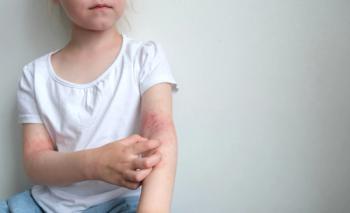
ICD-10 Code L80 Accurately Identifies Vitiligo
A new study confirms ICD-10 code L80's high accuracy in identifying vitiligo, especially when combined with treatment data, enhancing clinical research.
It was found that the
Vitiligo is an autoimmune disorder that causes loss of skin pigmentation, affecting roughly 1.9 to 2.8 million people in 2020, according to
Due to vitiligo resulting in significant physical and behavioral impacts, accurate identification is critical for both clinical care and research. In electronic medical record–based studies, researchers tend to rely on the International Classification of Diseases, 10th Revision (ICD-10) code L80 to identify patients with vitiligo, according to the new JAMA Dermatology study.
Despite its widespread use, the accuracy of L80 in U.S. populations has not been validated. In a multi-institutional medical record review, researchers evaluated the positive predictive value of L80 across several diagnostic algorithms, providing insight into how well EMR-based studies reflect real-world vitiligo cases.
Researchers analyzed the Mass General Brigham Research Patient Data Registry to identify patients at Massachusetts General Hospital, Brigham and Women’s Hospital, Newton-Wellesley Hospital and affiliated sites with at least one L80 code recorded as a primary diagnosis from January 1, 2017, to January 1, 2025.
The study examined four identification strategies: a single code, two codes within six or twelve months and one code plus documented vitiligo treatment. Cases were confirmed using clinician documentation, with diagnostic confidence categorized as high, moderate or low based on secondary criteria. Sensitivity analyses excluded low-confidence cases and assessed nondermatologist-assigned codes.
Out of 3,454 records, 300 were randomly selected for review, and 285 individuals were confirmed to have vitiligo. The average age was 48 years, with slightly more females than males. Using at least one L80 code, the positive predictive value (PPV) was 95%. Requiring at least two codes within six or twelve months increased the PPV to 98%. Combining at least one code with a treatment resulted in a PPV of 99%.
Diagnostic confidence also was high in nearly three-quarters of cases, moderate in about one-fifth, and low in just over 6%. Excluding low-confidence cases, PPVs remained similarly high across all algorithms. To test generalizability, 100 additional patients assigned an ICD-10 code by non-dermatologists were reviewed. Among these, 95 were confirmed to have vitiligo, with PPVs ranging from 95% for a single code to 100% when requiring multiple codes or combining a code with treatment, supporting the reliability of L80 for identifying vitiligo.
These results show that ICD-10 code L80 is reliable for identifying real vitiligo cases, leading into a look at the study’s strengths, limits and what it means for future research.
The study revealed that ICD-10 code L80 is highly accurate for identifying vitiligo, with the highest accuracy when codes are paired with treatment data. Results were consistent whether using single or multiple codes.
Most cases were also diagnosed by dermatologists, reflecting typical U.S. care, but sensitivity analyses including low-confidence cases and non-dermatologist diagnoses showed high positive predictive values.
Compared with an earlier ICD-9 study, which had lower accuracy, the ICD-10 code performed much better, likely because it is a dedicated code rather than a broader category.
The study was limited by data from one region and a relatively small sample, but these issues were addressed by checking results in different ways, reviewing records from multiple sites and using a standard protocol with strong agreement between reviewers.
The findings suggest that ICD-10 code L80 can be reliably used in electronic medical record studies to identify vitiligo, improving research and supporting clinical decision-making.
Newsletter
Get the latest industry news, event updates, and more from Managed healthcare Executive.

















































